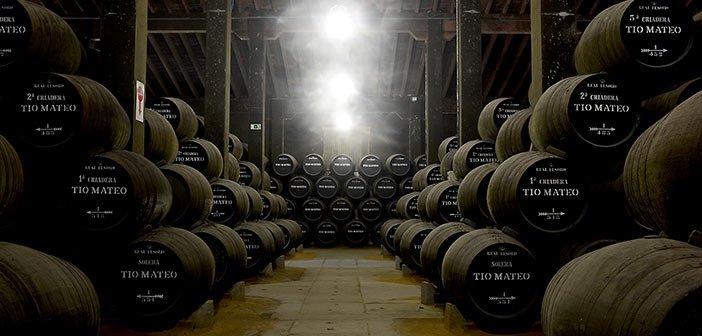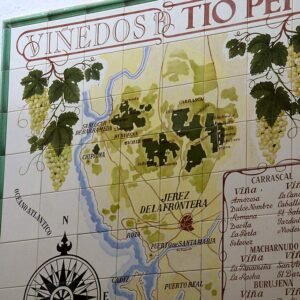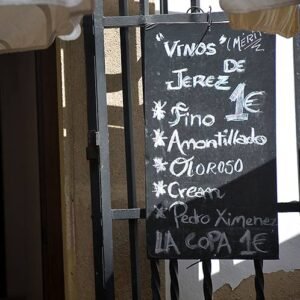On the Sherry trail article series introduces the noble and historic wine, sherry, and the three cities where it is produced. Not forgetting tasting or buying tips. Join us on a journey into the rich world of sherry.
Article 1/3
Sherry has deep roots in European history
Just knowing the history of sherry is enough to make you salute it. Ancient Phoenicians brought the art of wine-making with them to the southwestern Spanish province of Cadiz around 1100 BC. Through the storms of the world, the cultivation was continued by the Greeks, Romans, Moors and of course the Spanish. The English also had a major influence on sherry production and especially on trade. The word ‘sherry’ was coined by the English from Jerez de la Frontera, which the Moors called ‘Xeres’, and which the Romans had called ‘Ceret’.
The Moorish influence on the production of sherry and other fortified wines was significant. The Arabs knew the art of distillation (needed to make perfumes) and passed it on to the Spanish when they recaptured the Iberian Peninsula at the end of the 15th century. The addition of distilled spirit gave sherry an exceptionally long storage life, which was essential at a time when sea voyages could last months or years. It is said that the first round-the-world sailor, Fernão de Magalhães, spent more money on Sherry than on weapons when he equipped his ship for a voyage in 1519.
As the 1600s approached, the current sherry-producing areas began to take shape. It was learned that the Palomino Fino grape variety produced the freshest wines in the calcareous Albariza soil, which is the white soil of western Andalusia and especially the province of Cadiz.

Until the 1700s, a law was in force that prevented wineries from storing wine for fear it would lead to price manipulation. That law was repealed in 1744 and is said to have begun the development of the Solera system and the era of ‘modern’ sherry.
Albariza and the golden triangle of sherry
According to the original classification of the Jerez-Xérès-Sherry DOP, only wine made in the cities of the “Golden Triangle”; Jerez de la Frontera, Sanlúcar de Barrameda and El Puerto de Santa María can be called Sherry.
The Sherry Triangle and its surroundings are known for the Albariza soil. Soil is so white and chalky that it dazzles the eye in the midday sun. The hills, except for the low vines, are white with viticulture. The DO classified area is called Marco de Jerez and is slightly larger than the area of the triangle formed by the sherry towns.
The climate of the Sherry Triangle is very predictable and this makes the main variety, Palomino Fino, relatively easy to grow. The triangle gets about 300 days of sunshine / 3000 hours per year and about 600mm of rain (compare Helsinki about 700mm), but the rain comes in October-May. During the summer, the sun even shines on the hills with temperatures above 40 degrees Celsius, but winds from the Atlantic cool the vines. The shimmering white Albariza does not absorb the sun’s heat but reflects it back to the sky (nowhere else in Spain is the sky as pale blue as on the Costa de la Luz). The calcareous soil also absorbs a large amount of water, so there is no need for irrigation, even if it doesn’t rain much during the growing season.
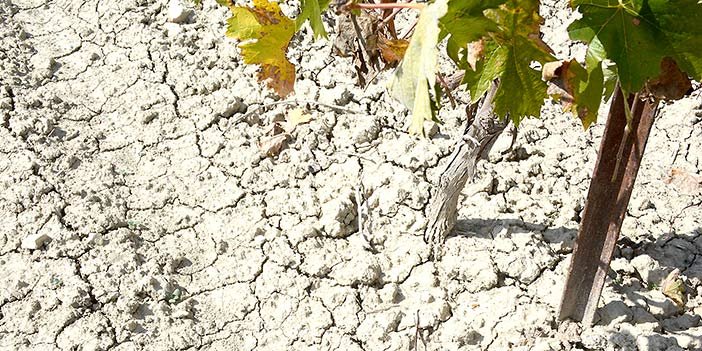
Making sherry in a nutshell
White wine from the humid and organically poor Albariza is not very interesting as such, but sherry is one of the few wines that are actually made in a cellar. It is often said that 90% of wine is made in vineyards and 10% in cellars. With sherry it’s the other way round.
- Harvesting of grapes (Palomino Fino, Muscat and Pedro Ximenez) between August and September.
- Pressing the grapes at different pressures. This gives the wine juice (yema) suitable for the different styles of sherry and base for distilled alcohol.
- Vinification using steel tanks.
- Maturation in oak barrels and a sobretabla phase of 6-8 months, during which the cellar master finally divides the barrels into the different styles of sherry.
- Addition of distillate to the wine, i.e. raising the alcohol content to a level suitable for the different styles (this can also be done again after ageing).
- Maturation in a Solera, or oak barrel system, where young wine is added to the old wine.
- The finished wine, at the desired age, is taken from the Solera and filtered, further concentrated or blended with another Sherry.

Sherry’s different styles will make your head spin

As a general rule, sherries are divided into two sub-categories; Finos and Olorosos. Finos are the fresher wines that are aged in barrels under “Flor” which is a kind of yeast surface inside the barrel. Flor protects the wine from oxidation.
Olorosos are rounder, nuttier, oxidized wines in which the Flor has not formed at all or has disappeared at the beginning of the ageing process.
If the aroma of sherry has to be summed up in one sentence, that’s what my five-year-old daughter said as she smelt my glass: “This one smells like old books!” That’s the best description of Sherry aroma I’ve ever heard.

Capital of Sherry; Jerez de la Frontera

Jerez’s small streets, old churches and plazas shaded by lemon trees are immediately captivating. The mysterious pale blue sky is like something out of a surrealist painting. The pedestrian streets are full of cafes, restaurants and people enjoying life and wine. The city has grown up with sherry. The bodegas in the very heart of the city center, even covering several blocks, are a testament to this. The largest ones also offer tours open to the public.
Grupo Estevez – the group behind many top brands

Grupo Estevez doesn’t say much to anyone in the north, but when you open up the brands under the umbrella; Real Tesoro, the world’s best-selling sherry “La Quita” and Valdespinos on the shelves of Alko, the light bulb goes on.
As Sherry’s sales decline, Grupo Estevez is expanding its repertoire ever wider, as are other big sherry houses. The list includes brandy, of course, but also gin and even vodka.
When I ask export director Miguel Montero about the future prospects, the answer and strategy is clear: “In a world where today the preference is mainly for sharply acidic and fresh white wines, sherry sales will continue to fall. Only the top brands will remain, and bulk production will slowly die out.”
Grupo Estevez does have experience of top production. Several of the house’s brands have been blessed with more than 90 points, and their Moscatel Toneles has received exactly 100 points from Parker.

“La Quita” Manzanilla
Fresh, lemon, apple and elegant yeastiness. A hint of salt on the palate, balanced, surprisingly fresh and slightly peppery on the finish. Really tasty and affordable with manzanilla.
Innocente Fino
The only palm wine in the entire sherry region, this is also exceptionally made with American oak. A hint of juniper, almond and yeast on the nose. The palate is balanced, dry and long.
Tio Diego amontillado
Round fruity nose with almond. Dry, well-balanced, broad, oaky and elegant.
Amontillado “Contrabandista”
This very dark amber-coloured wine has an open nose. Rust and wool. Semi-dry, balanced and woody finish. A little spice at the end. With pâtés it is said to be a good match.
Cream “Isabela”
An understated nose. Plum. Rusty acidity, sweet and long.
El Candado Pedro Ximenez
Very deep sloping nose. Coffee and dried figs. Very sweet, syrupy, full-bodied, balanced – absolutely gorgeous. I spooned a few spoonfuls of this on top and yes, I can taste it.
Gonzales Byass – bodega like a small town
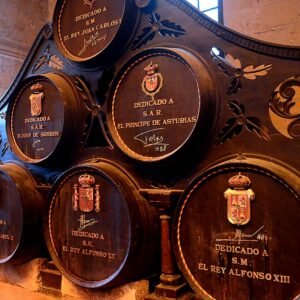
Gonzales Byass’ warehouses cover a good chunk of Jerez’s downtown core. There is enough bodega of various kinds, built in different periods, to fill the street labyrinth. Perhaps Byass’s most famous product and the world’s best-selling fino, Tio Pepe, has its own three-storey stadium-sized vertical walled column. Each floor holds 10,000 barrels of Tio Pepe, so the world won’t be running out of Fino anytime soon?
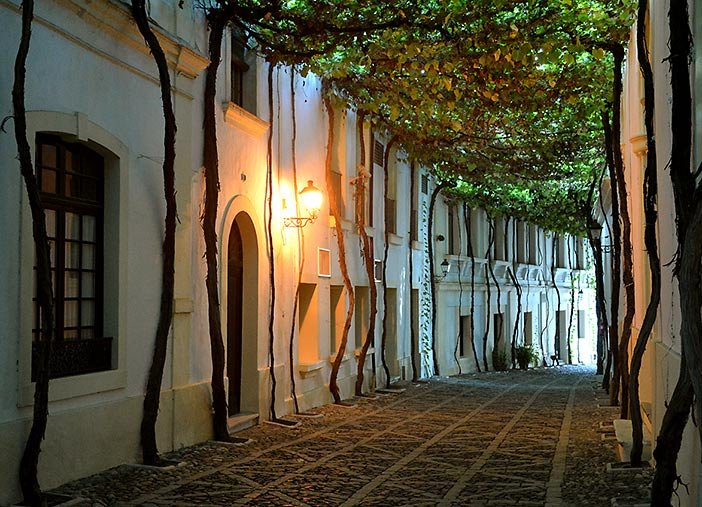
Tio Pepe
Rich, slightly resinous aroma. Very dry and slightly buttery on the palate. White pepper at the end. Not very interesting. Cold.
Alfonso Oloroso
Almondy and oxidized nose. Dry, slightly acidic, nutty, elegant.
Croft cream
Floral and resinous scent. Quite sweet, fruity, slightly raisiny and peppery.
Solera 1847 Cream
Sweet nuttiness and dandelion. Balanced sweet, chocolatey, long and elegant.

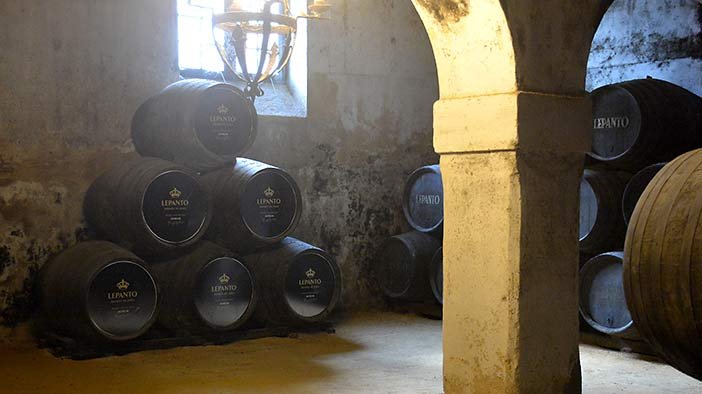
Smoky Tabanco are full of atmosphere
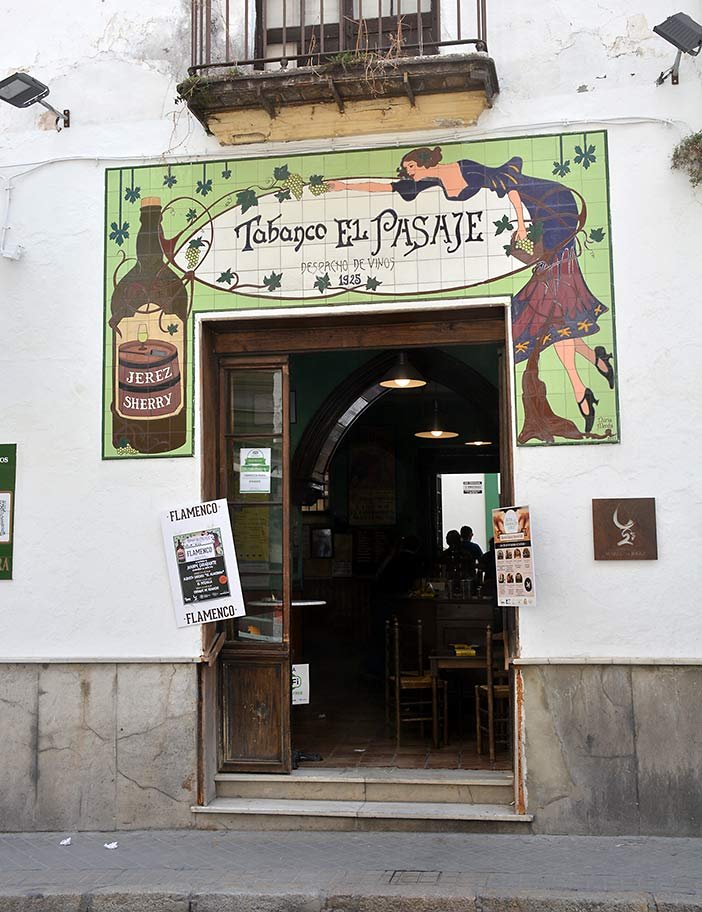
If walking around in a tourist group doesn’t appeal to you, Jerez is also full of “Tabancos”, or bars where you can get sherry and snacks for a accopanied with the glass of sherry. When the rest of the city falls asleep at siesta, the Tabancos are where the flamenco starts to scream, the heals to bounce and the wine to flow. If it’s raucous during the day – it’s the night time the bacchanals actually begins!
Other articles on the Sherry Trail
Manzanilla – Sanlucar de Barrameda
Text and photos: Janne Suomi
Last Updated on February 21, 2023 by Flavorado
This post is also available in:
Suomi

